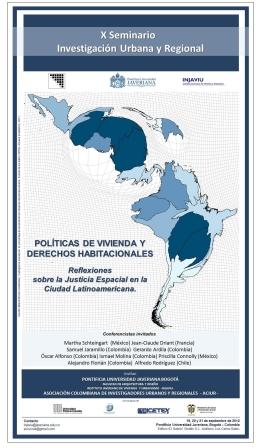Abstract
En Bogotá la renovación urbana se presenta en dos formas: por reedificación predio a predio, y por reurbanización a través del proyecto urbano planeado (SDP, 2012). Las mayores transformaciones del paisaje urbano están relacionadas con la reedificación, mientras que la reurbanización presenta escasos proyectos ejecutados, pese al gran número de planteamientos. Esta ponencia compara el proyecto BD Bacatá, de reedificación aprobado por norma, con el Plan Parcial de la Estación Central. El fin es demostrar que el primero representa una ventaja operativa con relación al segundo, desde las opciones de aprobación vía normativa o Plan Parcial. Esto genera la confusión entre lo que significa compactar el centro de la ciudad, con respecto a saturar la capacidad de la estructura funcional y de servicios, y deteriorar la calidad de vida de los ciudadanos. En este sentido, el Paisaje Urbano resulta un concepto pertinente, ya que permite visualizar simultáneamente los procesos ecológico y social.
This journal is registered under a Creative Commons Attribution 4.0 International Public License. Thus, this work may be reproduced, distributed, and publicly shared in digital format, as long as the names of the authors and Pontificia Universidad Javeriana are acknowledged. Others are allowed to quote, adapt, transform, auto-archive, republish, and create based on this material, for any purpose (even commercial ones), provided the authorship is duly acknowledged, a link to the original work is provided, and it is specified if changes have been made. Pontificia Universidad Javeriana does not hold the rights of published works and the authors are solely responsible for the contents of their works; they keep the moral, intellectual, privacy, and publicity rights.
Approving the intervention of the work (review, copy-editing, translation, layout) and the following outreach, are granted through an use license and not through an assignment of rights. This means the journal and Pontificia Universidad Javeriana cannot be held responsible for any ethical malpractice by the authors. As a consequence of the protection granted by the use license, the journal is not required to publish recantations or modify information already published, unless the errata stems from the editorial management process. Publishing contents in this journal does not generate royalties for contributors.


